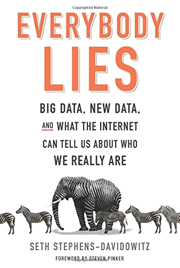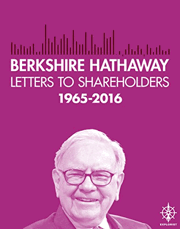
Back in the stone age of P2P lending (aka 2006), I used to read through Prosper loan listings one-by-one. Borrowers would outline their monthly budgets showing how they could afford their loan payments, along with explanations of why they needed the money (credit card debt, home improvement, etc.) and why they would pay you back (steady job, good credit history, etc). I’m not sure if this is even an option anymore, but in any case, I wasn’t very good at it.
The New York Magazine article How to Predict If a Borrower Will Pay You Back (excerpted from the new book Everybody Lies) discusses an academic paper that actually analyzed keywords within past Prosper listings against their default history. Consider the following 10 phrases:
- God
- promise
- debt-free
- minimum payment
- lower interest rate
- will pay
- graduate
- thank you
- after-tax
- hospital
Half of them are used by people most likely to pay back the loan. The other half are used by people who are least likely to pay back the loan. Care to venture a guess which are which?
Generally, if someone tells you he will pay you back, he will not pay you back. The more assertive the promise, the more likely he will break it. If someone writes “I promise I will pay back, so help me God,” he is among the least likely to pay you back. Appealing to your mercy—explaining that he needs the money because he has a relative in the “hospital”—also means he is unlikely to pay you back. In fact, mentioning any family member—a husband, wife, son, daughter, mother or father—is a sign someone will not be paying back. Another word that indicates default is “explain,” meaning if people are trying to explain why they are going to be able to pay back a loan, they likely won’t.
The phrases used by folks who are most likely NOT to pay back their loans are God, promise, will pay, thank you, and hospital. If someone promises that they will pay you back, they probably won’t pay you back. The more emotions are involved, the less likely they are to pay you back.
This is an interesting wrinkle as lending is such a huge part of the investing world – mortgages, bonds, insurance, and so on.
 Instead of watching the entire 6-hour Berkshire Hathaway (BRK) annual shareholder’s meeting, I first read through the
Instead of watching the entire 6-hour Berkshire Hathaway (BRK) annual shareholder’s meeting, I first read through the  Ting Mobile has a free
Ting Mobile has a free 
 The Best Credit Card Bonus Offers – March 2024
The Best Credit Card Bonus Offers – March 2024 Big List of Free Stocks from Brokerage Apps
Big List of Free Stocks from Brokerage Apps Best Interest Rates on Cash - March 2024
Best Interest Rates on Cash - March 2024 Free Credit Scores x 3 + Free Credit Monitoring
Free Credit Scores x 3 + Free Credit Monitoring Best No Fee 0% APR Balance Transfer Offers
Best No Fee 0% APR Balance Transfer Offers Little-Known Cellular Data Plans That Can Save Big Money
Little-Known Cellular Data Plans That Can Save Big Money How To Haggle Your Cable or Direct TV Bill
How To Haggle Your Cable or Direct TV Bill Big List of Free Consumer Data Reports (Credit, Rent, Work)
Big List of Free Consumer Data Reports (Credit, Rent, Work)